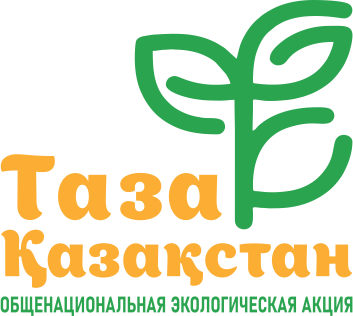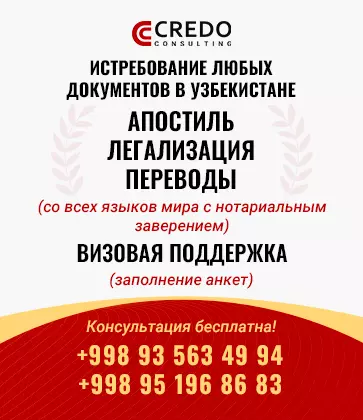Science and Society in Central Asia: Dr Uğur Öztürk on Risk Communication and Climate Challenges
Dr Uğur Öztürk on climate risks in Kazakhstan and the need for better science communication and cooperation.

Foto: Dr Uğur Öztürk // Photo provided by the Dr Uğur Öztürk
How can scientific knowledge be effectively shared with society — and why does it matter for Kazakhstan? In this interview for Cronos.Asia, Dr Uğur Öztürk, Professor at the University of Vienna, discusses overlooked climate risks — from landslides to wildfires — and emphasizes the urgent need for accessible communication and international cooperation to prevent natural disasters.
"Effective risk communication must go beyond publishing in journals. It needs to speak to at-risk communities, local authorities, educators, and the general public in ways that are understandable, actionable, and culturally appropriate"
— Dr Öztürk… Climate change increasingly involves extreme weather events, which in some way directly affect natural hazards. What do you think that are the main emergencies, including those that you believe are currently underestimated, with a direct impact on society as far as the Central Asian region, especially Kazakhstan, is concerned?
— Climate change primarily raises global temperatures, and this positive trend is particularly pronounced in central Asia, including Kazakhstan, where warming is occurring faster than the global average.
This increase in temperature intensifies several climate-driven natural hazards, notably mass movements (such as landslides), floods, and wildfires—all of which have direct and growing impacts on society. While many human actions alter these hazards intensity and occurrence chance, I prefer to call them socio-natural hazards.
Let’s take Almaty as an illustrative example. Currently, it receives just under 900 mm of rainfall annually, spread over roughly 120 days. That averages to about 6 mm of rainfall every three days, with perhaps three to four heavy rainfall events reaching 50 mm.
Under human induced climate change projections, total annual rainfall may decrease, but timewise not homogenously. Let’s assume this drop hypothetically to a total around 800 mm — but this rain is likely to fall over fewer days, perhaps 80. This shift would mean more intense individual rainfall events — for instance, 6 mm every five days and potentially four events exceeding 80 mm.
This change implies a drier overall climate but a higher likelihood of extreme weather events, which increases the risk of flash floods and landslides. Longer dry periods also elevate wildfire risks, especially in Kazakhstan’s forests and steppes.
When intense rainfall does occur, it can overwhelm river systems, triggering flash floods. In the case of landslides, the mechanism is more complex: heavy rainfall infiltrates the soil, raising pore water pressure and reducing slope stability, which can ultimately result in slope failures.
In terms of spatial distribution. Flood hazards are particularly high along Kazakhstan’s river systems as expected. Wildfire risks are widespread, especially in forested and steppe regions covering entire Kazakhstan.
Landslide risks are concentrated in the south, particularly near the borders with Kyrgyzstan and China, where mountainous terrain and increased precipitation intensity make hillslopes more landslide prone.
One underestimated emergency in this region is the compound risk of multiple hazards — for example, wildfires followed by heavy rains that cause flash floods and debris flows due to destabilized soil with weaken vegetation. These cascading effects can overwhelm disaster response systems and disproportionately affect vulnerable communities.

— Everything about natural hazards is researched by scientists like you, often reserved for publications and events that concern the few experts in the field. Do you think it would be necessary as well as useful, a more structured local and international communication and information strategy, aimed at ordinary people, about possible risks involving natural hazards, locally and on a large scale, what to do and what not to do if you are in the midst of a natural hazard, and above all to raise as much awareness as possible about how to individually and collectively do prevention....
— Yes, I strongly believe that a more structured local and international communication strategy on socio-natural hazards is not only necessary but essential.
While scientific research has made great progress in understanding these hazards, much of the knowledge remains within academic circles, written in technical language and often only available in English — making it inaccessible to the people living at-risk areas. Even if these bariers are lifted, many key publications, thus knowledge, are hidden behind paywalls, inaccessible without paying a substaial sum.
Effective risk communication must go beyond publishing in journals. It needs to speak to at-risk communities, local authorities, educators, and the general public in ways that are understandable, actionable, and culturally appropriate. This is especially important in low- and lower-middle-income countries, where language barriers and lack of access to science can leave people uninformed and unprepared.
Recent research shows that natural hazard fatalities have stopped decreasing globally — in part because people don’t always know how to react during emergencies. This highlights the need for better public communication and disaster response education. A great example is Japan, where earthquake drills are part of school curricula and emergency preparedness is part of the daily life. This type of integration is exactly what we need more of, both locally and internationally.
That’s why I support initiatives that bridge the gap between science and society. For example:
- Some universities now issue public press releases for major scientific findings. I have such experience as some of my former publications went through this process.
- Organizations like the European Geosciences Union (EGU) run blogs to share research in accessible language, and their annual general assembly hosts training sessions on how to write policy briefs to train junior scientists.
- The Young Academy of the Austrian Academy of Sciences supports outreach through school visits and contributions to popular media, such as blog posts for Der Standard — something I’ve personally been involved in.
These efforts are steps in the right direction, but they’re still fragmented. What’s missing is a coordinated strategy — ideally involving scientists, governments, educators, and media — to systematically raise awareness, educate the public, and build a culture of prevention. This should include:
- Multilingual outreach materials tailored to different regions.
- Integration of hazard education into school systems.
- Public campaigns about what to do before, during, and after specific events like floods, landslides, or earthquakes.
- Tools to help local authorities translate scientific knowledge into effective preparedness policies.
To better tailor these suggestions, there is a journal, Geoscience Communication by European Geoscience Union, where scientists publish and discuss alternative options to improve science communication in the geosciences. They publish content to improve outreach, education, and public engagement.
In summary, communication is not an optional extra — it is central to saving lives. As scientists, we have a responsibility to ensure that our research doesn't end with publication, but reaches those who need it most.
— What inter-university project would you like to propose to your fellow researchers, experts on natural hazards in Kazakhstan for something that you think is concretely useful and achievable in a relatively short time?
— In my former university, we established a bilateral internationalization project with a university in India, covering a period of five years. We employed three PhD students and one postdoctoral researcher as core members. These PhD students split their training time between the two institutions and were co-supervised by two supervisors, one from each country.
In addition, we organized annual field schools in the Himalayas, involving both the core members and several master's students from both countries. These field schools were supervised by several senior researchers from both institutions. Over time, the cooperation between these members strengthened. Although the project has officially ended, the teams continue to explore alternative funding schemes to develop new research projects.
Based on this positive experience, I would recommend a similar strategy. Through local funding, a few Kazakh PhD students could be employed at their home university and spend one to two years in Austria. As part of this program, we should also organize field schools in Kazakhstan.
Unfortunately, to my knowledge, there is currently no bilateral research program between Austria and Kazakhstan that could support such a project. However, initiating dialogue to establish such a collaboration—similar to agreements that exist in trade—could be an effective starting point.
This would eventually help strengthen research ties between the two countries. An initial funding to organize just a field school could initiate further ties with bigger research funding.
The Expert Profile
Dr Uğur Öztürk is an Assistant Professor at the University of Vienna, where he holds the Chair for Geohazards in the Human-Environment System. He recently received an ERC Starting Grant (UrbanSlide, Grant ID: 101160656).
The project researches the interaction between socio-natural hazards and society, utilizing a combination of field data, remote sensing, and modeling.
Dr Öztürk actively works to connect scientific research with education and public awareness efforts, particularly in regions highly exposed to natural hazards, such as Central Asia and South America.
He completed his doctoral research at the Potsdam Institute for Climate Impact Research (PIK), where he investigated landslide dynamics within a multihazard framework.
Dr Öztürk subsequently worked as a postdoctoral researcher at both the University of Potsdam and the GFZ Helmholtz Centre for Geosciences. During this time, he contributed to several international collaborative projects across Europe, South Asia, and Central Asia.
Автор интервью: Пьетро Фиокки
Любое использование материалов допускается только при наличии гиперссылки на cronos.asia.
Подписывайтесь на Telegram-канал Central Asia Cronos и первыми получайте актуальную информацию!



